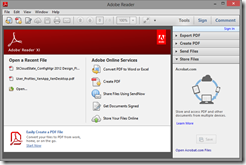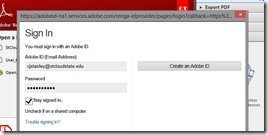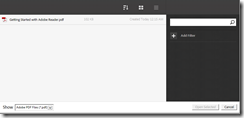 I believe that we can learn a lot from other academic institutions. One of the institutions that I like to check in on is Cornell University. Cornell is going through an Information Technology re-envisioning process and it reminds me a lot of the journey we are on at St. Cloud State University. If you are interested in getting involved in the future of IT as SCSU, I strongly encourage you to look at follow the conversation at Cornell’s IT Strategic Plan site. There are so many good things I could point out about Cornell’s site but I’ll try to focus in on a few.
I believe that we can learn a lot from other academic institutions. One of the institutions that I like to check in on is Cornell University. Cornell is going through an Information Technology re-envisioning process and it reminds me a lot of the journey we are on at St. Cloud State University. If you are interested in getting involved in the future of IT as SCSU, I strongly encourage you to look at follow the conversation at Cornell’s IT Strategic Plan site. There are so many good things I could point out about Cornell’s site but I’ll try to focus in on a few.
This year during the Fall Convocation Provost Malhotra asked that we “re-imaging the student experience.” Cornell has put together a Student Experience Innovation Gallery that has a ton of great ideas. Does that spark any ideas for you on ways we can help re-imaging the student experience?
Next, as a part of their process to focus on the future of IT, they held an open daylong meeting and brought in some great keynote speakers: Shel Waggener and Diana Oblinger. Shel Waggener is a Senior Vice President of Internet2 and Diana Oblinger is the President and CEO of EDUCAUSE. (Nerd Alert) From an Education-IT perspective, that is a rock star lineup for an IT planning meeting! I encourage you to read the abstract of their presentations on the Cornell IT Strategic Future site. Or even better watch their full presentation via their streaming video site.
I want to highlight a few key points from their presentation that I think are particularly relevant to SCSU. The first point made by Shel Waggener is that the cloud is real, imminent, and unavoidable. It is like a stampede and Universities can either decide to get trampled or to get on our horse and help direct its future. I believe that this he is dead on in this assessment. Both SCSU and MNSCU are trying to do more with less and there is a new push to try to collaborate and share services. This is a great and noble endeavor, but I believe it’s 5 or more years too late. The cloud players are massive. Trying to go it our own just doesn’t make sense anymore. From an innovation perspective there is no way to keep up. From a financial perspective there is absolutely no way to keep up. I’ve heard many people concerned about outsourcing, losing their jobs, etc. Is see the situation from the opposite perspective. If we try to do it all and compete with services like Google, Amazon, Microsoft, etc. we will lose. And we simply do not have enough people to help our faculty, staff, and students embrace the cloud services that will make them the most successful. Embracing these cloud services is the best way to keep a vibrant technology department that can deliver the results our community needs.
Next, Diana Oblinger shows us that technology and education at our local universities needs to change radically. There are so many innovative services available to our community. Our community will ultimately end up leveraging these services whether or not we embrace them. Diana offers many different ways to consider leveraging new technology services and trends. I think her presentation should inspire us all to reimagine what might be possible with technology and education in the future.
Kudos to Cornell University’s IT department for putting together so many great resources and offering outstanding communication to their community to build a better IT department. Let’s learn from their success!
 We’ve updated the interface for the Web-based Files Access service which allows our students, faculty and staff to access to their files remotely using a web browser. The Web-based Files Access service is a key service to allow our users to work anywhere, at any time, from any device. Below is the update list from the release notes.
We’ve updated the interface for the Web-based Files Access service which allows our students, faculty and staff to access to their files remotely using a web browser. The Web-based Files Access service is a key service to allow our users to work anywhere, at any time, from any device. Below is the update list from the release notes.







 I believe that we can learn a lot from other academic institutions. One of the institutions that I like to check in on is
I believe that we can learn a lot from other academic institutions. One of the institutions that I like to check in on is